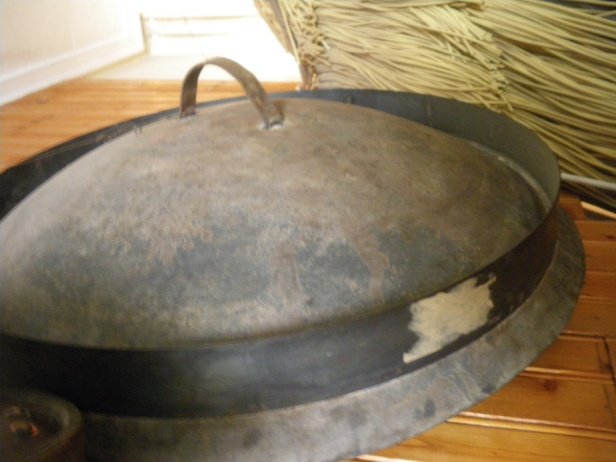COOKING WARE, so called GASTRA |
||
|---|---|---|
Visual or audio material of objects, buildings and constructions, processes |
||
 |
||
Description accompanying the visual/audio material
Early 20th century. GREECE Cuisine All over the Epirus Mountains and lowland pastures where the transhumant shepherds moved extensively. In Ancient Greece “gastra” was a food preparation concave utensil. This specific cookware was also indispensable for transhumant shepherds, particularly the Sarakatsani, who moved extensively all over the Epirus Mountains and lowland pastures, exchanging their dairy products with wheat, corn, flour and salt. With these simple ingredients and a pan on coals, covered by the all-purpose gastra, namely a metallic lid that converts a simple pan to an improvised oven, they cooked not only pies, but also made bread. The gastra in the photo can be found at the exhibition hall of the Cultural Association “Fraternity of Epirotes Sarakatsani in Athens”. The photograph was taken by Pavlos Katris, member of the Cultural Association “Fraternity of Epirotes Sarakatsani in Athens”. |
||
The gastra was a primitive, all-purpose, mobile oven, a concave tin structure which had a handle so that it could be lifted, the so called xithali, or moved around when it was not hot. Below the handle there was a metal hoop to keep the ashes and coals warm. In the house’s “corner”, usually tiled, to keep the temperature constant, the housewife would stoke and light the fire with branches that burn quickly and produce coals in a matter of minutes. The gastra was placed on top of the fire its tin becoming red hot from the burning fire. When the fire diminished the housewife would then clean the “corner”, and place in it the oven dish with food or bread, covering it with the gastra; ashes and burning coals were put around and on top of it, sealing the mobile oven. Cooking was slow and thorough in this contraption and, as a result, it produced delicious dishes. Bread, pies, sweets, and roasts were usually cooked in the gastra. The gastra of the photo has a diameter of 65 cm and was made of tin. |
||
Angeliki Chatzimichali, “Sarakatsani” Athens, 1957 |
||
Gastra, xithali, Sarakatsani, cooking, cook ware |
||
